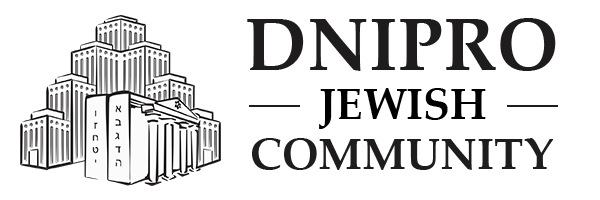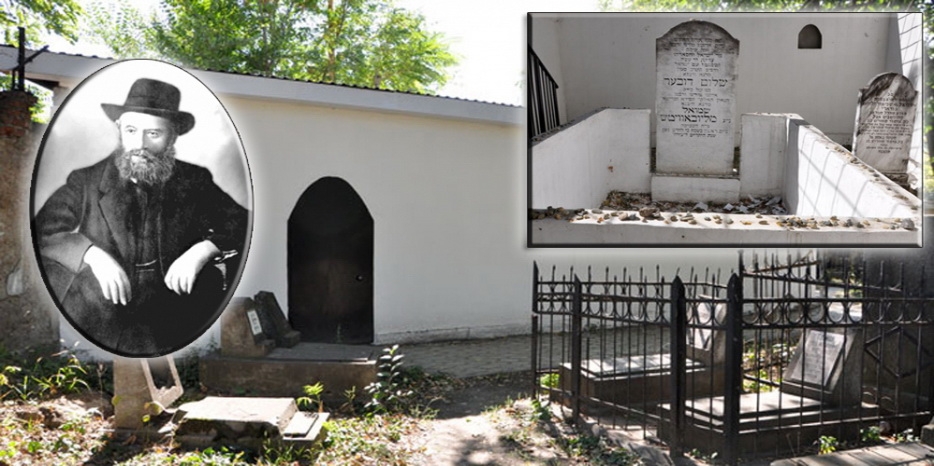Today, the 2nd of Nissan, marks 105 years since the passing of Rebbe Rashab, the Fifth Lubavitcher Rebbe, Rabbi Sholom DovBer Schneersohn.
Rebbe Rashab led the Jewish people at the turn of the 19th and 20th centuries. In 1897, he founded the renowned network of yeshivas, Tomchei Temimim, waged an uncompromising battle against assimilation and efforts to separate Jews from their ancient faith, and fervently defended his people against antisemitism—first from the Russian authorities, and later from the Soviet regime. He paid special attention to spreading the teachings of Chassidism among Georgian Jews.
Along with many Jews of Belarus, he endured the ethnic cleansing of 1915, orchestrated by the Russian government, in which Jews were forcibly relocated deeper into the empire. Separated from his beloved Lubavitch, the capital of Chabad for 102 years, but surrounded by devoted Chassidim, the Fifth Lubavitcher Rebbe relocated the center of Chabad Chassidism to Rostov-on-Don.
It was in Rostov that he witnessed the fall of the monarchy, followed by the collapse of the democratic Provisional Government, the dissolution of the Constituent Assembly by the Bolsheviks, and the onset of terror and civil war.
Rebbe Rashab’s attitude toward the Bolsheviks and the Soviet regime was well described by Marina Karpova in her article “Against All Odds”:
“One spring day in 1920, the Fifth Lubavitcher Rebbe, Sholom DovBer Schneersohn, approached the window of his home in Rostov to see what was causing the noise in the city, which had recently been taken over by the Bolsheviks. A workers’ demonstration was passing by, waving flags and banners threatening the ‘merciless destruction’ of the new regime’s enemies. After watching for a moment, the Rebbe turned away and sadly remarked, ‘No, I cannot live in the same world as these people.’ His words proved prophetic. Two weeks later, on March 21, 1920, Rebbe Sholom DovBer passed away.”
More detailed recollections of Rebbe Rashab’s final hours were left by one of his household members, Reb DovBer Rivkin:
“On the eve of the holy Shabbat of the Torah portion Vayikra, at 5 PM, I entered the room of Rebbe Rashab and saw that his face had changed dramatically—it had become frightening. It truly burned with fire, and his eyes protruded prominently. Physicians stood all around, doing everything within the power of medicine. They did not disclose the true condition of the Rebbe to us, but they already knew that under natural circumstances, there was no hope…
Shortly before sunset, all the Chabad Chassidim gathered in the prayer hall, reciting Psalms and weeping in prayer for mercy. By evening, on the holy Shabbat, Dr. Landa told several Chassidim that, unless a miracle occurred, there was no hope, and therefore, in his opinion, the Rebbe’s son should be informed in case he wished to ask his father anything. When Dr. Landa told Rebbe Rayatz about the actual state of affairs, he could not accept the idea. He continued to believe that the situation was serious but not beyond hope.
At the conclusion of the holy Shabbat, around 10 PM, as Rebbe Rayatz stood by his father’s bedside, Rebbe Rashab turned to him and said in a clear voice:
— I am ascending to Heaven. I leave the manuscripts to you. Take me to the hall. We will be together.
Upon hearing these words, Rebbe Rayatz was deeply shaken. Rebbe Rashab noticed his son’s distress and said:
— Agitation?.. Agitation?.. intellect!.. intellect!..
He was immediately moved to the hall—the very hall where he had studied Torah, prayed, and spread great light to the world. His bed was placed against the eastern wall. The doctors did not leave his bedside, administering various injections for ten minutes.
The community of Chassidim gathered, weeping and multiplying their prayers, pleading with the Almighty to extend the days of their Rebbe. The name Chaim (life) was added to his name. The Chassidim also convened a beit din of three people, allowing anyone who wished to donate time from their own lives to the Rebbe. Each Chassid gave six months of his life. Rebbetzin Shterna-Sara also came before the beit din and wished to give ten years of her life to the Rebbe, but the beit din would not allow her to give more than two.
Around 2 AM, as Rebbe Rayatz stood, bowed over his father’s bedside, Rebbe Rashab slightly raised his hand and began whispering something. Rebbe Rayatz understood that his father wanted to bless him and leaned in so that the Rebbe’s hands rested on his head. After this, Rebbe Rashab also blessed Rebbe Rayatz’s daughters. At that moment, it became clear that his strength was fading, his eyes were closed, and his breathing weakened until it nearly ceased…
All the Jews of Rostov participated in the funeral. Rebbe Rashab was buried in the old Rostov cemetery. In the year 5700 (1940), the authorities decided to demolish the old cemetery, and his grave had to be relocated to the new cemetery.”
Alexander Olenev, a historian from Rostov, notes that at that time, the Bolsheviks deliberately desecrated “bourgeois” graves. When it became known that they planned to target the Rebbe’s grave, his burial site was secretly exhumed at night. According to eyewitnesses, his body had not decayed. He was then reburied in the southeastern corner of the new Jewish cemetery, with no marker to protect the grave from Communist authorities.
This same precaution saved Rebbe Rashab’s grave during the Nazi occupation of Rostov. According to the same source, for a long time, the Lubavitcher Rebbe’s grave remained unmarked. Only in the 1990s, after the fall of the Communist dictatorship, was the burial site rediscovered through the testimony of witnesses. Following this, Chabad followers erected a dignified ohel (gravesite structure), installed a marble tombstone, and the resting place of Rebbe Rashab became one of the world’s major pilgrimage sites.




